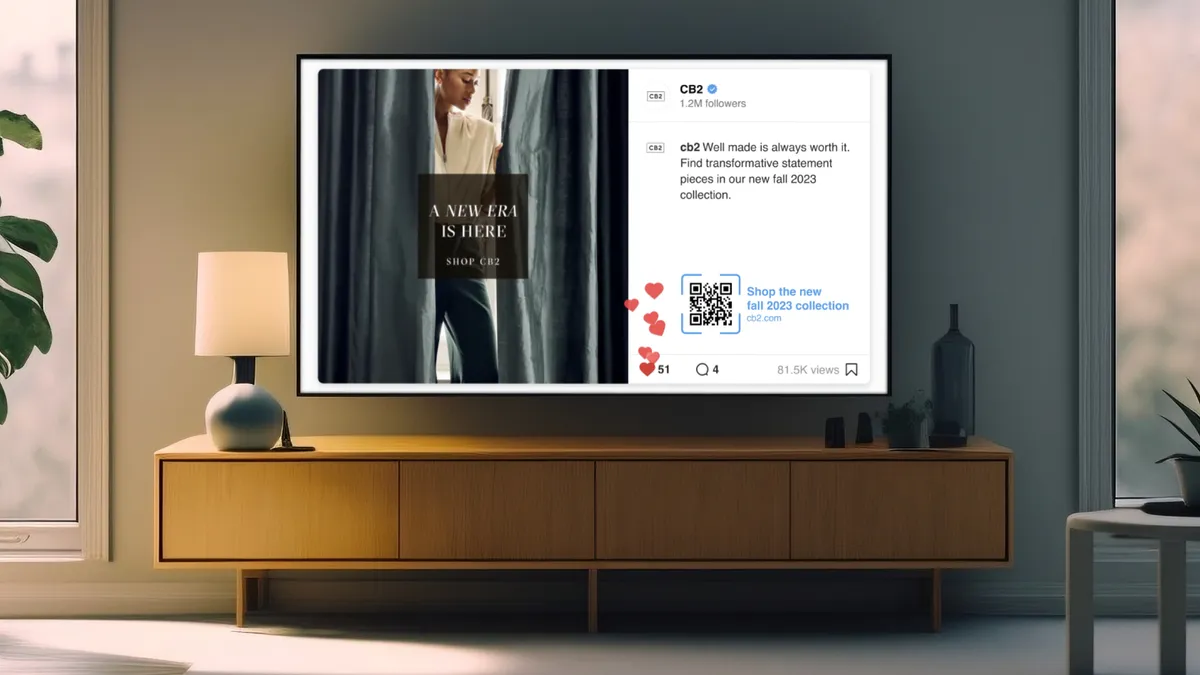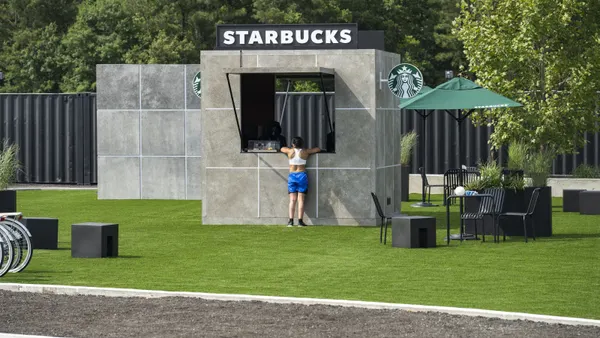Earlier this year, retailer CB2, a subsidiary of Crate & Barrel aimed at younger, modern, urban consumers, launched a social marketing campaign showing its new “Best of” collection. A video of product shots with a techno soundtrack and a shoppable QR link were posted on the company’s Instagram account, delivering more than 81,000 views and more than 200 likes.
With decent results like these — not to mention the ease of creating content for social — the marketer has already been repurposing content for display ads. But, as consumer viewing time grows increasingly fragmented, could it also take the content to the quickly growing connected TV (CTV) space? Tobin Schiller, CB2’s vice president of marketing, decided to find out.
“We really want to make sure we have a diverse media mix to support our brand,” Schiller said. “We are always looking for new ways to push interest and brand awareness, and this is something we were interested in testing.”
Living-room ready
The brand agreed to test a new product from one of its vendors, Spaceback, which was already working with CB2 on automatically converting some of its social media content into display advertising. The creative automation platform was getting ready to roll out an extension that would turn videos created for social media into ads for digital video channels.
“The barrier to entry to CTV has come down on the media side, but it’s still very expensive to create 15-second, 30-second 4K television spots,” said Casey Saran, co-founder and CEO of Spaceback. “Brands are creating a lot of social media content that is really strong, and it’s way too good to not be in the living room.”
Spaceback’s new product, Social CTV, can turn popular social media posts into video ads appropriate for connected TV. In addition to the video, the ads can highlight a brand’s social media messaging and near real-time updating of a post’s engagement. The video for CB2, for instance, included animated hearts to show people loving the brand.
“It’s really framed like a social post on a television screen, with the social data on it,” Saran said. “It’s authentically recreating an Instagram real as a 15-second television ad for CTV.”
A different relationship with ads
That may not sound like a huge leap, but in the consumer’s mind, social media and TV are very different experiences. Many don’t think of branded content on social as advertising but more like their friends’ posts that they follow and engage with, Saran said.
“This is a way to change the relationship that people have with advertising by bringing those elements that feel more like content [to a different channel] and generate engagement with brands,” Saran said. “It’s about taking that voice and tone and unique content and bringing it outside the walled garden of social media. We’re not trying to make social media more like ads, we’re trying to make ads more like social media content.”
Spaceback’s process is fully automated and uses a CPM-based pricing model, enabling brands to run multiple messages simultaneously while capitalizing on viral posts and trending content. This can help marketers avoid content fatigue and frequency challenges, Saran said. CB2’s Schiller agreed.
“It allows us to be nimble and have something extra on the creative side that we can get to market really fast,” Schiller says. “We’re able to take proven winners on our social channels and get into a whole new channel with zero extra effort on our team.”
While Schiller declined to discuss specific metrics for the “Best of” campaign, the results were strong enough to convince the marketer to launch another test in the fall and possibly others in the future.
“We know that social is where people spend most of their time these days,” Schiller said. “Anything that is engaging and a serious brand moment for us feels like a likely candidate to translate into CTV. I would imagine we will continue to test and learn what works best in these formats.”












